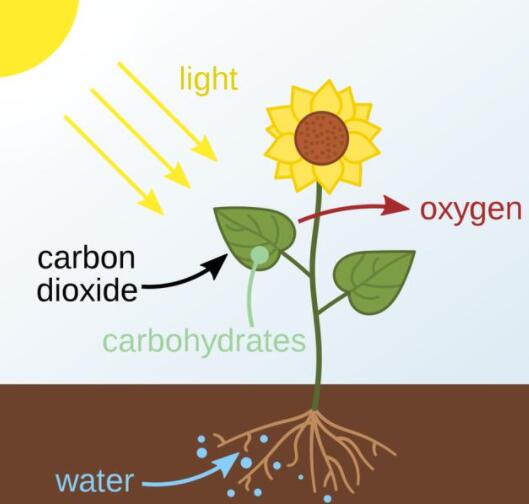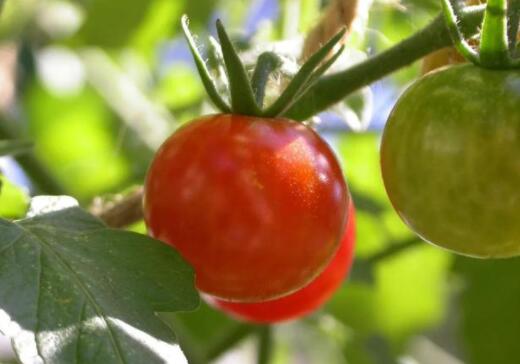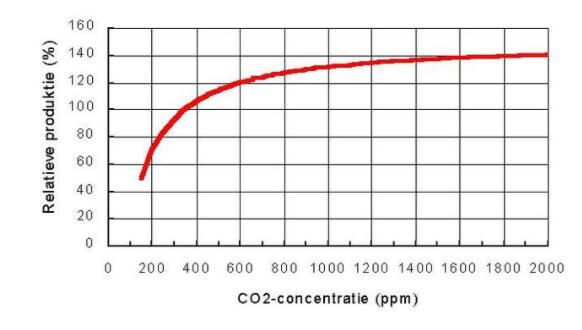
Carbon dioxide -- an important role in modern intelligent glass greenhouse

Basic formula of photosynthesis of green plants source: Wikipedia
The supplement of carbon dioxide in greenhouse cultivation also plays an important role in modern intelligent glass greenhouse, which can help growers achieve a variety of excellent effects, such as better crop performance, more dry matter synthesis, longer preservation period, better fruit taste and so on.

We know that the basic elements of green plant growth are carbon dioxide and water. Under light conditions, they carry out photosynthesis, synthesize carbohydrates and release oxygen through plant chloroplasts. As a relatively closed growth environment, coupled with the continuous growth and biochemical action of crops, there is a significant difference between the carbon dioxide concentration in the greenhouse and the external environment. The level of carbon dioxide in greenhouse will also directly affect the growth of crops. Whether too much or too little carbon dioxide will have a certain impact on crops.

Basic formula of photosynthesis of green plants source: Wikipedia
As an important element of environmental control, what are the basic points for carbon dioxide supplement in greenhouse to achieve the best effect? This article will focus on the role of carbon dioxide in facility agriculture in the Netherlands and the actual control of greenhouse.
Change of carbon dioxide content in Greenhouse in a day
Generally, if the greenhouse can be supplemented with additional carbon dioxide, the carbon dioxide concentration will remain relatively stable after the last supplement in the afternoon (it will also decrease to a certain extent if it is sunny that day); The level of carbon dioxide at night will continue to generate carbon dioxide in the greenhouse with the respiration of crops, that is, the carbon dioxide concentration will continue to accumulate and reach a higher level before sunrise; In the early morning of sunrise, as the activity of crops becomes higher, photosynthesis will also begin, so as to absorb carbon dioxide and bring about the decrease of carbon dioxide concentration, that is, the time node for replenishment.
What seasons and periods of time do you need to supplement in a day or even a year?
Time period for carbon dioxide supplement of greenhouse crops
In fact, there are many factors affecting crop photosynthesis and other biochemical effects. There are day and night in 24 hours a day; High temperature and low temperature exist throughout the year, which will also be affected by specific crop varieties, greenhouse location and other basic conditions. Therefore, under the topic of time period, we can discuss it by situation:
In days:
Dutch growers have basically reached a consensus that they will turn on and off the carbon dioxide supplement according to the sunrise and sunset time of the day. Because the photosynthesis of crops and whether they are in the activated state will largely depend on the arrival of light radiation (similar to the formulation idea of irrigation strategy), many Dutch growers will choose to start the supplement about 2 hours after sunrise and end the Supplement 2 hours before sunset to optimize the strategy.
In years:
The external environment, including air pressure and temperature, will affect the CO2 in the air. Seasonal changes will also affect the demand of crops for CO2. Generally speaking, compared with winter, crops will have higher demand for CO2 in summer. Because the crop itself will be more active under the condition of high temperature and high light intensity, and constantly carry out biochemical activities such as metabolism and photosynthesis; The temperature is generally low in winter. If there is no fill light in the greenhouse itself, the crop growth will be relatively gentle, and the demand for CO2 will not be too high.
Effect of carbon dioxide concentration on crop growth
The concentration of carbon dioxide in greenhouse should not be too high or too low. The specific value needs to be discussed separately according to the different characteristics of different crops.
Insufficient carbon dioxide content: as the basic raw material of plant photosynthesis, low concentration environment will cause plants to be in a "hungry" state, which has a great impact on crop growth and development. The leaf color is easy to appear dark and dull, and the plant growth is poor; Flowers and fruits are also easy to fall off; More abnormal fruits and lower quality; Negative effects such as reduced production.
Too high carbon dioxide content: too high carbon dioxide concentration is easy to cause leaf curl, affect the normal progress of photosynthesis, affect the absorption of oxygen by crops, and can not carry out normal respiration and metabolism.
It can be seen that an appropriate concentration range is also very important. In the Dutch industry, such a chart has directional significance for the grasp of greenhouse concentration:

Effect of CO2 concentration (in PPM) on relative crop yield
It is easy to know from the above figure that if the CO2 concentration in the greenhouse can be increased from 200 ppm to about 600 ppm, the auxiliary effect on crop growth will be huge, and the percentage of crop yield increase will be about 50%; However, when the carbon dioxide concentration increases from 600 ppm to about 1000 ppm, the yield percentage can only increase by about 10%. It means that considering the actual input, if the carbon dioxide concentration can be controlled within the optimal (not necessarily the highest) range, the increase in output can also achieve the best effect. With the supplement of 400ppm carbon dioxide, it is obvious that the improvement rate in the first half is greater and the corresponding return on investment is higher.
As a major advantage of modern facility agriculture, growers or operators of environmental control system also need to better master how to achieve the optimal control idea from the perspective of plant physiology and the basic laws of greenhouse, so as to achieve the best effect of return on investment.
Tags:anti-reflective glass diffuse glass agricultural greenhouses glass greenhouse venlo greenhouse AR glass greenhouses glass agricultural glass horticultural glass #greenhouseglass #Antireflectiveglass #Diffusetemperedglass #Ultrawhitefloatglass #agriculturalgreenhouseglass #diffuseglass #horticulturalglass #Tomatogreenhouse #Coloredpeppergreenhouse #Lettucegreenhouse #Agriculturalgreenhouse #ARglass #venlogreenhouse #greenhouseglass #Antireflectiveglass #Diffusetemperedglass #Ultrawhitefloatglass #agriculturalgreenhouseglass #diffuseglass #horticulturalglass #Tomatogreenhouse #Coloredpeppergreenhouse #Lettucegreenhouse #Agriculturalgreenhouse #ARglass #venlogreenhouse #GlassManufacturer #invernadero #ArchitecturalGlass #ClearFloatGlass #FloatGlass
Previous:Scientific management of intelligent digital glass greenhouse
Next:Six precautions for soilless cultivation nutrient solution in Greenhouse



















